
Achieving goals means doing the work that brings success. This includes getting yourself organised on a daily basis by planning your time. When you consciously and intentionally choose how and where you spend your time, you minimise stress that otherwise builds up when you have to rush to get things done at the last minute. To help you plan your time for a highly successful day, I’ve created a beautiful daily planner that you can download and print from my website. And it’s free! Read on for some tips on how to use the planner to make the best investment of your time each day.
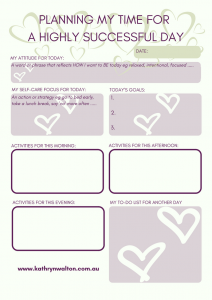
Plan Your Time for a Highly Successful Day
Your planner has been designed to be quick and easy to use. When you invest a couple of minutes each day into planning how you choose to spend your time, the payoffs can be enormous! A little bit of organisation goes a long way. Here are a few tips to get you started with your planner.
Choose an attitude to take you through the day
It’s all well and good that you make an action plan, but it’s even more important to choose an attitude for the day. Visualise yourself selecting and clothing yourself in an attitude each morning, just as you choose which clothes to wear. Writing your attitude down on your planner, right at the very top, will keep it present in all that you do. Here are some examples of attitudes that you might like to choose from (but really, the sky is the limit with choice here!)
- relaxed

- focused
- intentional
- mindful
- gentle
- assertive / firm
- warrior
- action-oriented
- efficient
- patient
Choose a self-care focus for the day
Self-care makes you more resilient and gives you strength. But it can easily get tossed to the side when you’re busy. Don’t be a self-sacrificing martyr – the world needs you to stay strong – so make sure your self-care stays high on your list of priorities. Some examples of self-care that you can incorporate into your day include:
- go to bed at …….. (write down the time you intend to go to bed)

- take my lunch break away from my work
- say ‘no’ more often
- go for a walk
- chat with a friend
- take the time to cook a nutritious meal
- meditate
- read a book for ½ hour
Choose 2 – 3 goals for the day
Don’t be overwhelmed by your to-do list. Be realistic. Choose just 2 or 3 tasks to prioritise for each day. When you achieve your short list of objectives, you’ll feel a sense of accomplishment and motivation. And that’s much better than feeling overwhelmed at the enormity of everything on your ever-expanding to-do list that you haven’t accomplished in the day. Some days my short list of goals or priorities looks like this:
2. be on time for school pick-up
3. have dinner ready by 7pm
Other days I choose goals that require more energy and focus, such as:
1. write and publish a blog post
2. update clinical records
3. research and write new privacy policy
Break the day up into sections
I often refer to this technique as “chunking it down”. When you break the day up into chunks, you’re better able to focus on that one period of time. You work more efficiently and effectively, gain a sense of achievement throughout the day, and feel less overwhelmed by the enormity of what’s on your plate. This type of scheduling can be applied to many different situations including school assignments, boring tasks, housework, meetings and so on. On your planner you can break up the activities you want (or need) to focus on in the morning, afternoon and evening. Here’s an example of what my planner sometimes looks like:
chunks, you’re better able to focus on that one period of time. You work more efficiently and effectively, gain a sense of achievement throughout the day, and feel less overwhelmed by the enormity of what’s on your plate. This type of scheduling can be applied to many different situations including school assignments, boring tasks, housework, meetings and so on. On your planner you can break up the activities you want (or need) to focus on in the morning, afternoon and evening. Here’s an example of what my planner sometimes looks like:
Activities for This Morning
- go for walk
- pay the bills online
- clinical and administration tasks
Activities for This Afternoon
- watch a training video
- get the groceries while my son is at his speech lesson
Activities for This Evening
- reheat leftovers for dinner
- join my online video mentoring group
Keep a list of to-do’s to carry over to another day
At the bottom of your planner there is space for you to keep a list of tasks, activities and other to-do’s that weren’t on your priority list for today. Having them handy here means that if your day has gone smoothly and you have time and energy up your sleeve, you can easily run your eye down this list and select additional tasks to work on. Or, perhaps things haven’t worked out today as expected and you need to reorganise your priorities. This space also enables you to make a record of tasks as you think of them so they don’t get lost in your hazy busy brain! My ‘to-do list for another day’ is quite extensive. I use it like a bank of tasks that I can select my priority goals from each day, and then cross them out as I achieve them!
other to-do’s that weren’t on your priority list for today. Having them handy here means that if your day has gone smoothly and you have time and energy up your sleeve, you can easily run your eye down this list and select additional tasks to work on. Or, perhaps things haven’t worked out today as expected and you need to reorganise your priorities. This space also enables you to make a record of tasks as you think of them so they don’t get lost in your hazy busy brain! My ‘to-do list for another day’ is quite extensive. I use it like a bank of tasks that I can select my priority goals from each day, and then cross them out as I achieve them!
So there you have it! A system to plan your time for a highly successful day. And a reminder to be gentle with yourself when it doesn’t all go to plan. This system is simply a plan – a flexible tool to guide your daily choices and actions. Experiment with the plan to see what works best for you.
Take a Minute for Your Mind
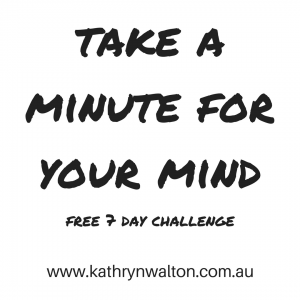 HAVE YOU SIGNED UP FOR MY FREE 7 DAY CHALLENGE “TAKE A MINUTE FOR YOUR MIND”? Available for a limited time only! For more information and to register, go to the OFFERS tab on my website!
HAVE YOU SIGNED UP FOR MY FREE 7 DAY CHALLENGE “TAKE A MINUTE FOR YOUR MIND”? Available for a limited time only! For more information and to register, go to the OFFERS tab on my website!
Discovering mountain biking as life’s ultimate parallel universe in her middle age,  Kathryn Walton shares information and reflections in Daisy Spoke that connect, inspire and self-empower women to make healthy choices for themselves. She integrates her love of physical exercise, family, nature, gardening and creative arts with her professional background in mental health social work to facilitate change with individuals, groups and communities of women who are committed to living life to the full.
Kathryn Walton shares information and reflections in Daisy Spoke that connect, inspire and self-empower women to make healthy choices for themselves. She integrates her love of physical exercise, family, nature, gardening and creative arts with her professional background in mental health social work to facilitate change with individuals, groups and communities of women who are committed to living life to the full.
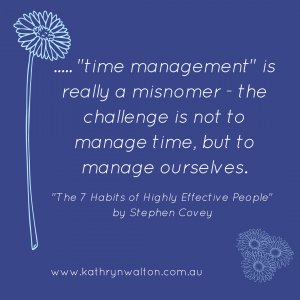

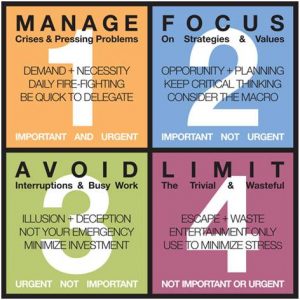


 anything they want. It’s a message that’s intended to be encouraging by chipping away at the gender stereotypes our society has constructed over many generations. For so many reasons we know that women can, and do, achieve amazing things in our world. There are many wonderful role models who inspire and propel us towards our own version of success.
anything they want. It’s a message that’s intended to be encouraging by chipping away at the gender stereotypes our society has constructed over many generations. For so many reasons we know that women can, and do, achieve amazing things in our world. There are many wonderful role models who inspire and propel us towards our own version of success.  S
S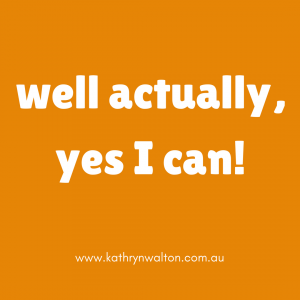 The beauty of the process is that you don’t have to even have any real idea of where you want your future to be heading in order to benefit from this retreat. Yo
The beauty of the process is that you don’t have to even have any real idea of where you want your future to be heading in order to benefit from this retreat. Yo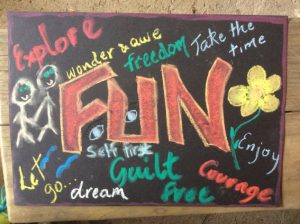 powerful creative activities. The gentle pace will support you to make valuable connections with
powerful creative activities. The gentle pace will support you to make valuable connections with  We will be giving away some special bonuses and door prizes at the retreat including beautiful journals, meditation cushions, carry bags, a Tony O’Connor CD of relaxation music, and more – fabulous gifts to support your self-care and progression!
We will be giving away some special bonuses and door prizes at the retreat including beautiful journals, meditation cushions, carry bags, a Tony O’Connor CD of relaxation music, and more – fabulous gifts to support your self-care and progression!
 Daily exercise and general physical activity are crucial elements of feeling good. Just as some people might need to diligently take medication every day, I need to exercise every day. Exercise is nature’s way of stimulating the hormones which aid concentration, problem-solving, sleep, digestion, and mood. This daily dose of exercise rebalances our body’s systems resulting in wide-ranging benefits that no single medication can provide. The research is absolutely clear that regular medium to high intensity exercise can have a profound effect on health AND happiness.
Daily exercise and general physical activity are crucial elements of feeling good. Just as some people might need to diligently take medication every day, I need to exercise every day. Exercise is nature’s way of stimulating the hormones which aid concentration, problem-solving, sleep, digestion, and mood. This daily dose of exercise rebalances our body’s systems resulting in wide-ranging benefits that no single medication can provide. The research is absolutely clear that regular medium to high intensity exercise can have a profound effect on health AND happiness.


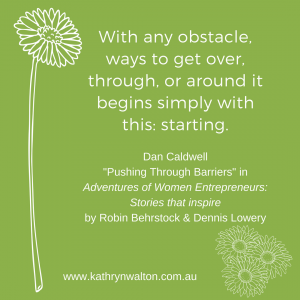


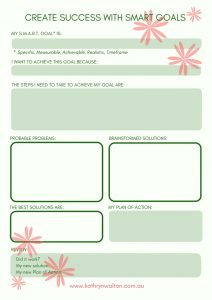
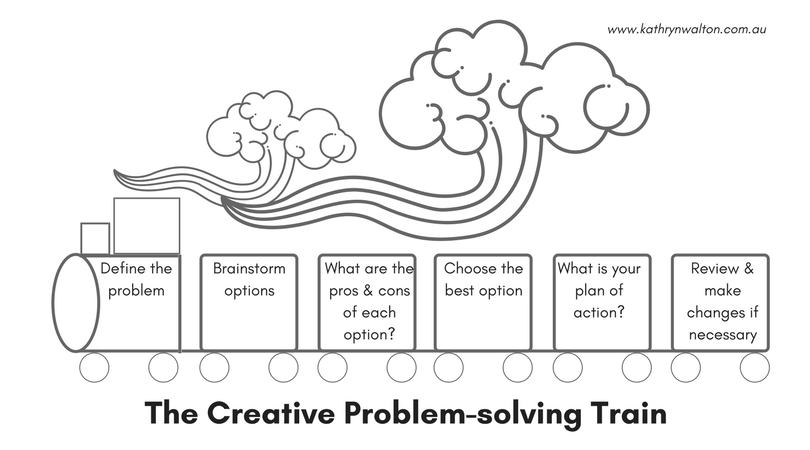
 analysing
analysing  time I respect them. I teach many individuals and groups how to use goals to enhance their mental health and wellness, and I see amazing progress when they are used effectively.
time I respect them. I teach many individuals and groups how to use goals to enhance their mental health and wellness, and I see amazing progress when they are used effectively. 
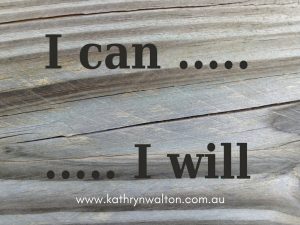 Remember all those problems your mind started to thinking about in Step 2? Problem-solving is where the power is (another blog later this month will look at this in more detail). Persistence makes all the difference between giving up on your goal (and yourself) and being unstoppable. Some of the problems will be predictable and you’ll be able to plan for them. Others less so.
Remember all those problems your mind started to thinking about in Step 2? Problem-solving is where the power is (another blog later this month will look at this in more detail). Persistence makes all the difference between giving up on your goal (and yourself) and being unstoppable. Some of the problems will be predictable and you’ll be able to plan for them. Others less so. In the meantime, if you haven’t already signed up for Grounded Inspiration, now’s a great time to do that. Never miss out on the latest news, inspiration or blog posts! And be the first to hear about my new releases throughout the year as I develop and publish programs to enhance women’s wellness and professional knowledge.
In the meantime, if you haven’t already signed up for Grounded Inspiration, now’s a great time to do that. Never miss out on the latest news, inspiration or blog posts! And be the first to hear about my new releases throughout the year as I develop and publish programs to enhance women’s wellness and professional knowledge. 
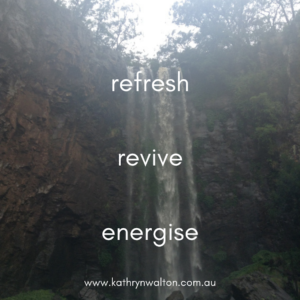
 Kathryn Walton shares information and reflections in Daisy Spoke that connect, inspire and self-empower women to make healthy choices for themselves.
Kathryn Walton shares information and reflections in Daisy Spoke that connect, inspire and self-empower women to make healthy choices for themselves.